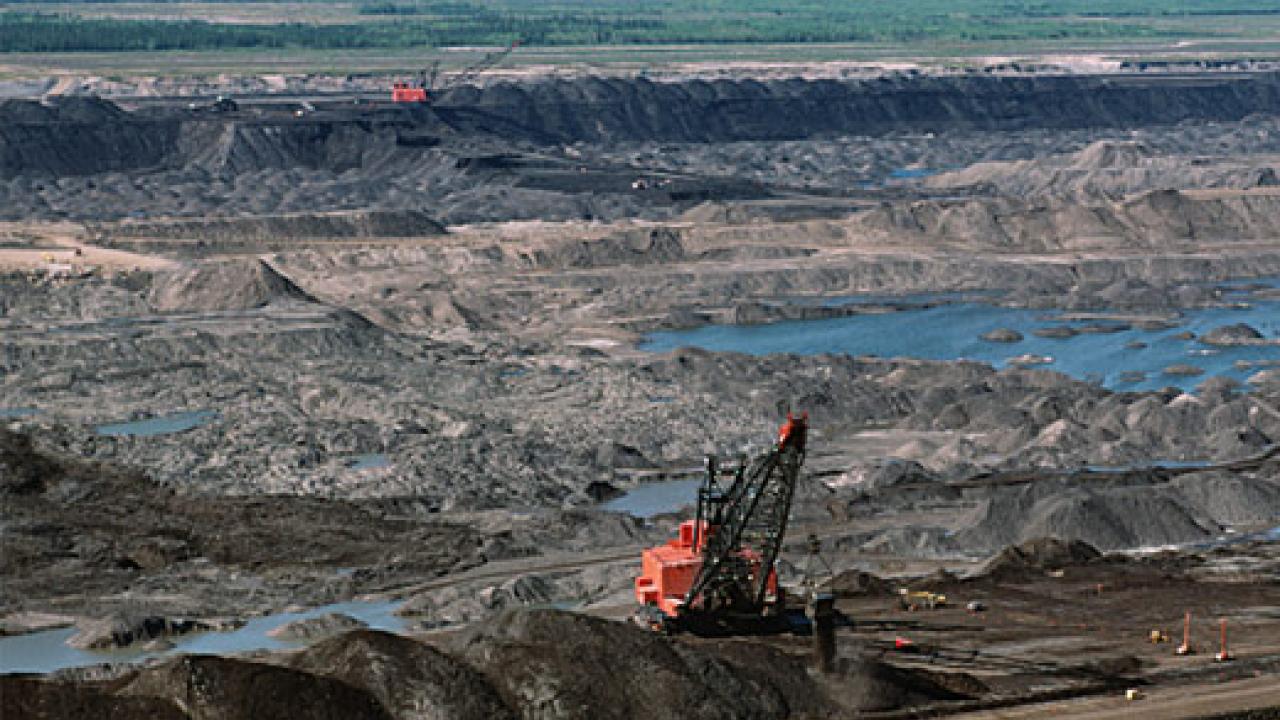Gasoline and diesel fuel extracted and refined from Canadian oil sands will release about 20 percent more carbon into the atmosphere over the oil's lifetime than fuel from conventional crude sources in the Unied States, according to a study by the U.S. Department of Energy’s Argonne National Laboratory; the University of California, Davis; and Stanford University.
The researchers used a life-cycle, or “well-to-wheels,” approach, gathering publicly available data on 27 large Canadian oil sands production facilities. The study, published in the journal Environmental Science and Technology, found the additional carbon impact of Canadian oil sands was largely related to the energy required for extraction and refining.
“The level of detail provided in this study is unprecedented,” said co-author Sonia Yeh, a research scientist at the Institute of Transportation Studies at UC Davis, who helped lead research on emissions related to land disturbance. “It provides a strong scientific basis for understanding the total carbon emissions associated with using this resource, which allows us to move forward with informed discussions on technologies or policy options to reduce carbon emissions.”
Crude estimates
Canadian oil sands are extracted using two processes, both of which are energy intensive. Oil close to the surface can be mined, but still must be heated to separate the oil from the sand. Deeper sources of oil are extracted on-site, also called in situ extraction, requiring even more energy when steam is injected underground, heating the oil to the point it can be pumped to the surface. The extracted oil product, known as bitumen, can be moved to refineries in the United States or refined on-site to upgraded synthetic crude.
On-site extraction tends to be more carbon intensive than surface mining, and producing refined synthetic crude generally requires more carbon emissions than producing bitumen. Depending on which methods are used, the carbon intensity of finished gasoline can vary from 8 percent to 24 percent higher than that from conventional U.S. crudes.
“This is important information about the greenhouse gas impact of this oil source,” said lead author and Argonne researcher Hao Cai. “Canadian oil sands accounted for about 9 percent of the total crude processed in U.S. refineries in 2013, but that percentage is projected to rise to 14 percent in 2020.”
The research was funded by the Bioenergy Technologies Office and Vehicle Technologies Office within DOE’s Office of Energy Efficiency and Renewable Energy.
Media Resources
Kat Kerlin, Research news (emphasis on environmental sciences), 530-750-9195, kekerlin@ucdavis.edu
Sonia Yeh, Institute of Transportation Studies, (530) 830-2544, slyeh@ucdavis.edu
